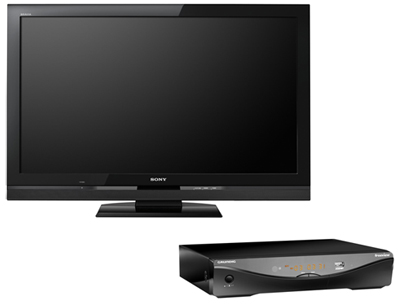What is Digital Television (DTV)?
Digital TV (or DTV, for short) is a type of television trasmission that's been brought in to replace the conventional analogue signal, which has been used since the invention of television. Digital TV signals are transmitted as a digital signal instead of an analogue signal, and as a result it requires either a digital set top box to decode the signal, or a TV that's capable of receiving digital TV signals.
In Australia, traditional analogue television has been replaced with digital television transmissions, and was phased out completely in late 2013.

How is digital TV different to analogue TV?
DTV offers various advantages over analogue TV, including a clearer picture, higher definition, and the ability to include program information in the form of an Electronic Program Guide (EPG). It also offers the ability to broadcast a show in different languages - either using a separate audio stream, or optional subtitles. The digital signals themselves also use less of the radio spectrum, meaning that they make better use of the avaialable bandwidth. Likewise, by changing the quality of the video and audio signals, broadcasters can reduce the bandwidth they use, making space for extra channels or services.
One of the problems with analogue TV is that the picture quality is very much dependent on the quality of the signal. Often with analogue TV, you'll end up with a fuzzy 'snow' clouding the picture, or a ghosting type effect or one of many similar issues. At some point or another, most people who've used analogue TV have ended up standing on a chair, holding a set of rabbit ears at arm's length out of a window - or shouting instructions at someone else to tell them when the signal was 'right'.
Digital TV, by contrast, requires a complete signal, otherwise you either won't see anything, or the signal will become 'blocky'. For the most part, with digital TV you'll either get a perfect picture, or nothing at all.
High Definition (HD) and Standard Definition (SD)
One of the things that differentiates different digital TV channels is whether they're HD (high definition) or SD (standard definition). The difference between the two, in the simplest terms, is their resolution, or how 'sharp' they appear, with HD obviously being the sharper of the two.
There is some argument as to what exactly constitutes a 'HD' television broadcast, but in Australia it's generally accepted that television signals broadcast at 576i are 'SD', and that 576p and higher are considered 'HD'. In many other parts of the world, 720p is considered the standard 'minimum' resolution for a HD television broadcast.
If you want to receive and view HD broadcasts in all their glory, you will need a television capable of a resolution of 1920x1080 pixels. This will allow you to properly view 1080i DTV signals, which are currently the highest definition signals that are being used for DTV. If your television has a lower resolution (even if it's advertised as 'HD'), you wont' be able to enjoy the image as it was intended.
Most new televisions have a digital receiver built into them, and won't require an additional set-top box to receive television. In fact, if they don't contain a receiver they're normally referred to as 'monitors' rather than TVs.
If you have an older cathode ray tube (CRT) style television (the big boxy ones), you will need a set top box to receive DTV. The only advantage of getting an HD set top box instead of an SD set top box for your old TV is that it will give you access to the channels that are being broadcast in HD - you won't see any difference in terms of picture quality.
Analogue TV phase out by 2013
By the end of 2013, analogue TV signals were switched off around the country and all free-to-air TV is now digital only. While many Australians had already made the switch to digital TV, the Government wanted to ensure that all Australians were ready for digital TV when analogue signals were switched off in 2013. The Government ran a major ‘Digital Ready’ campaign in the period approaching the switch-off to support a smooth and successful transition to digital-only TV in Australia.
Assistance with the changeover
Households that received analogue TV using a self-help retransmission tower were also be eligible for government assistance to receive digital TV via satellite, under the federal government's Satellite Subsidy Scheme, if they signal they received wasn't scheduled to be converted to digital.
Likewise, some households were also eligible for a free digital TV set top box, provided that they received certain government benefits, had access to a television and didn't already receive digital TV.
Full details of these government assistance measures and further details on the changeover are available on the government's DigitalReady site.




